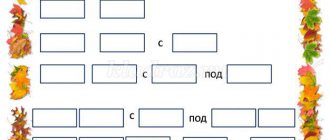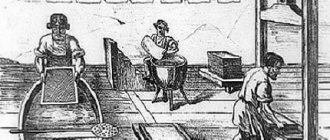Summary of an open walk in the preparatory group
Summary of an open walk in the preparatory group
Conducted by: teacher of the Merey Center for Prolingual Development
No.
20 of the city of Ekibastuz Tkacheva L.D. Venue
: site
Number of children
: 25
Take-out materials:
turntables, hoops, mittens, gloves, sleds, shovels, brooms, magic box with a riddle and a task, bird food
Multilingualism:
kys -winter - winter, zheltoksan - December - December, kantar — January January, aқpan- February –February, snow -snow - kar, sled - sledges - shana, blizzard boran - snow-storm, warm mitten - zhyly kolgaptar - warm mitten, baqytty Zhana zhyl - Happy New Year - happy New Year, strong wind - strong wind - kushti zhel
Preliminary work: a colored labyrinth of frozen water in balloons
December
Conversation
- What is the first month of winter?
- What has changed at the kindergarten site compared to November?
- What has changed in people's clothing compared to autumn?
- What are the protective properties of snow?
- Look for signs of winter in our area.
- What is children's favorite holiday in December? (Bakytty Zhana zhyl - Happy New Year - happy New Year)
Observation of
by the wind.
Goal:
expanding children's knowledge about natural phenomena, developing curiosity.
Riddle:
Breaks branches, lifts snow.
You hear it, but you don’t see it. (wind) Offer turntables to determine the direction and strength of the wind. Explain to children that strong winds during snowfall cause blizzards. But snowstorms can occur without snowfall. Even in clear weather, a strong wind lifts snow from the ground, carries and swirls it with force, forming drifts and sweeping snowdrifts. This phenomenon is called drifting snow. In winter there are very often snowstorms. Experimental activity “How to warm your hands?” Goal
: identifying the conditions under which objects can warm up (friction, movement; heat conservation).
The teacher suggests putting different mittens on your hands - thick and thin - and finding out how your hands feel (one hand is warm, the other is cool). Next he suggests clapping your hands, rubbing your hands together and finding out what you felt (your hands became hot in both mittens). The teacher suggests rubbing the frozen cheek or nose with the back of the mitten and finding out what you felt (the cheek is first warm, then hot). Children conclude that objects can warm up through friction and movement. Game activity: Relay games: Purpose:
development of a sense of camaraderie, the ability to obey general rules.
-"Who is faster?"
(running, leaning on a sled)
- “Running through a labyrinth” (
dexterity, ability to change the direction of movement)
colored labyrinth of frozen water in balloons Individual work.
Children with high motor activity: “Hit the hoop.” Goal: to exercise the ability to act on a signal;
strengthen the ability to throw objects at a target. Children with low motor activity: “Sliding along icy paths.” Goal: exercise in balance. Independent activity. Goal
: implementation of acquired motor skills in independent activities.
Sledding, playing snowballs Work : 1.
“Let's clear the snow buildings”
Goal:
fostering a desire for collective participation in activities - preparing the playground.
The teacher draws the children's attention to the layer of fallen snow. He invites everyone to remove snow from paths and buildings together so that they can play. Children independently prepare tools (shovels, brooms), decide where to shovel the snow, what can be made from a new snow pile. In a snowdrift they find a magic box - candy in it task 2. Replenishing the feeder with seeds and crumbs Task from a magic box
After a walk children make a collage “The Christmas tree is dressing up, the holiday is approaching”!
Summary of a walk in the preparatory group "Observation of inanimate nature."
Municipal budgetary preschool educational institution
“Kindergarten No. 55 “Goldfish”
Summary of the walk in the preparatory group
Observation of inanimate nature.
(educational area - cognitive development, speech development, social and communicative development, physical development)
prepared:
teacher
Ilyukhina Olga Nikolaevna
Mezhdurechensk
Goal: to clarify the concept of “living” and “inanimate” nature, to introduce children to an accessible phenomenon of inanimate nature - air temperature, to teach how to determine air temperature using an instrument, to expand and enrich children’s knowledge about seasonal changes in nature. Encourage children to answer questions, develop memory, speech and thinking. Develop and improve children’s motor activity through outdoor games and games-exercises. Cultivate goodwill and friendly feelings.
Educator. We all love nature. Nature is something that exists without human help. But do you all know that nature can be “living” and “non-living”? Living nature is everything that moves, grows, flies. Please name examples of living nature. (children's answers)
Inanimate nature is what surrounds us invariably all year round. Listen to the poem, mark and name the objects of inanimate nature.
"Look, my dear friend,
What's around?
Sky, light blue,
The golden sun is shining,
The wind plays with the leaves,
A cloud floats in the sky.” What do you think belongs to inanimate nature? (children's answers).
I have an amazing device in a secret box that will help us observe one of the objects of inanimate nature. A riddle will help you find out what kind of device this is.
1. “In both hot and cold weather there is a glass nose outside the window.
So that at any time of the year we know what the weather is like" (Thermometer)
2. “A glass man lives behind the window frame
Measures any weather on the fly" (thermometer)
A man invented a thermometer a long time ago. For more than 400 years, humanity has been using this invention. Translated into Russian, thermo means temperature, meter means measure. A device that measures temperature. How do you think this device is useful? How does he help people in life? Why do you need to know the air temperature?
Pay attention to the divisions - dashes on the thermometer. Tell me, what are they called? In the center of the scale, there is a glass tube with a special colored liquid. If it's warm outside, the liquid rises above the o. What does it mean if the thermometer goes down? (children's answers). Today all the guys are dressed warmly. Why? (children's answers).
Together with the children, note the air temperature and make a note on the thermometer. Now, we will put our device on the table and return to it later. In the meantime, we will play your favorite game “Sly Fox”. (the game is repeated 3-4 times)
Guys, autumn is a wonderful time of year. Name all the autumn months.
(children's answers) Please select words that characterize each autumn month. Did. game "Autumn Words".
September is fruitful, golden...
October is rainy, windy, fruitful...
November is cold, sad, snowy...
You are great, thank you for the interesting answers. I have prepared for you a new interesting game “Go through the maze”. Children receive cards with a movement pattern for the classic labyrinth. Through the game, develop attention, memory, and improve spatial orientation skills. The teacher sums up the results of the game, and together with the children the rules of the new game are established.
Now, we could play any outdoor game of your choice. But, unfortunately, in the area after a strong wind, there are a lot of broken branches and foreign objects that can be dangerous while running. I need helpers to clean our area. A subgroup of children of 4-5 people collect branches. The rest of the children play the games “Kalechina-malechina” and “Eat and Burnt”. The work is summarized. The teacher helps organize the outdoor game “We shared an orange” (the game is repeated 2-3 times). At the end of the game, the children return to observing the air temperature and note changes on the thermometer scale. The observations are summarized.
Free activity for children until the end of the walk.





